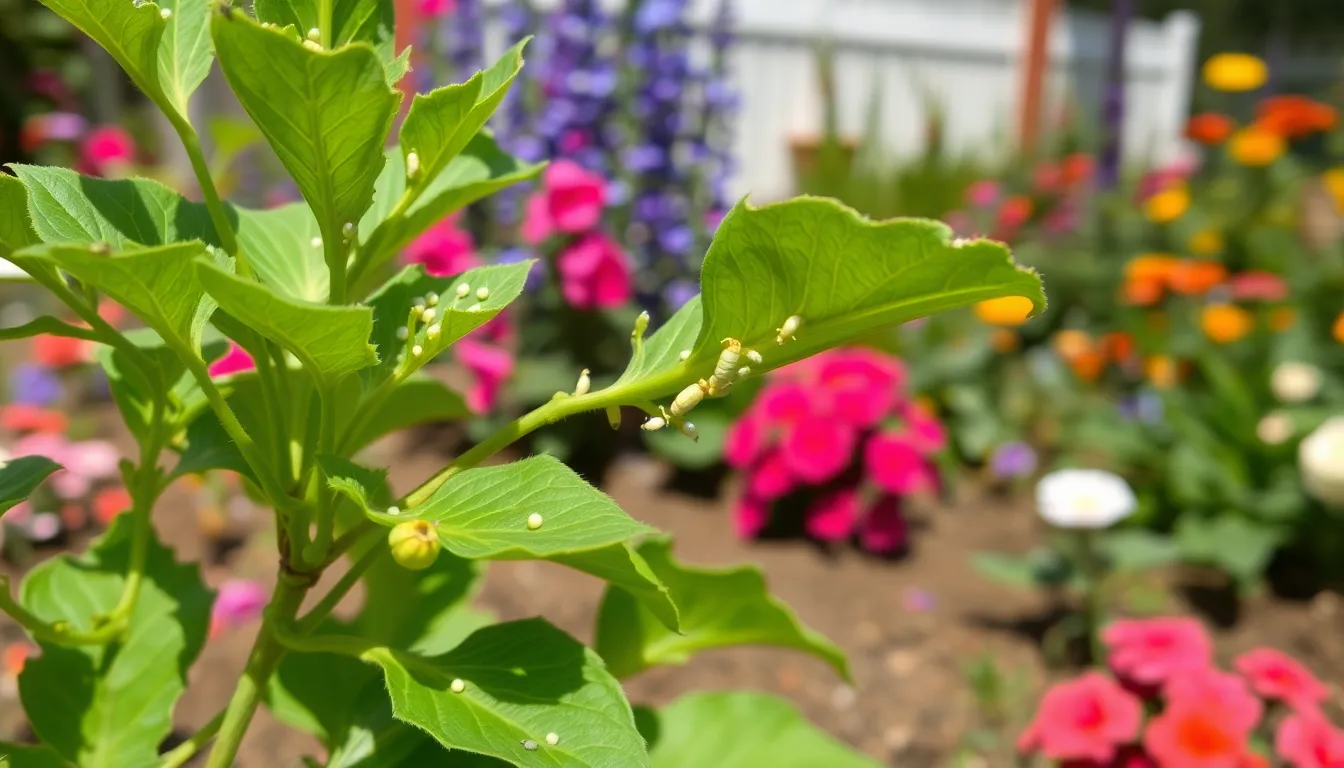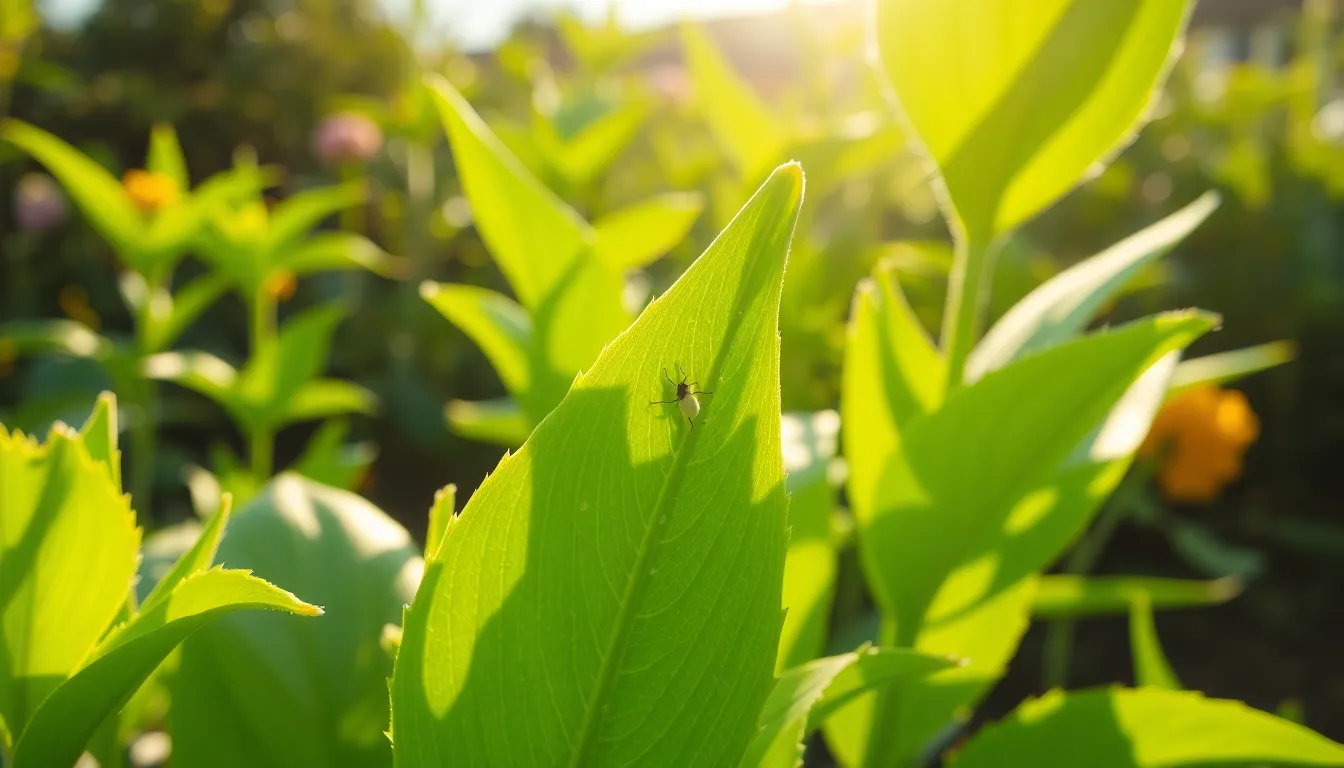The Best Fluffy Pancakes recipe you will fall in love with. Full of tips and tricks to help you make the best pancakes.

Outdoor Tiny White Bugs on Plants: How to Identify and Eliminate These Garden Pests
Tiny white bugs on plants might seem harmless at first glance, but don’t let their size fool you. These miniature invaders can wreak havoc on your beloved greenery faster than you can say “pest control.” Whether they’re aphids, mealybugs, or some other pint-sized menace, they’ve got a knack for turning your garden paradise into a bug buffet.
Outdoor Tiny White Bugs on Plants
Identifying tiny white bugs on plants requires attention to detail. Various species exist, each presenting unique characteristics.
Common Types of Tiny White Bugs
Aphids represent one of the most prevalent tiny white bugs found on plants. They usually cluster on new growth and stems. Mealybugs also pose a threat; they appear as cottony white patches on leaves and stems. Whiteflies, another common type, tend to linger on the undersides of leaves, often causing further issues. Thrips sometimes display a whitish appearance, but they are often elongated and can be harder to spot. Recognizing these specific bugs allows for more effective management and control.
Symptoms of Infestation
Symptoms of infestation vary among the different bugs. Yellowing leaves frequently indicate aphid damage. Plants may also exhibit curling or wilting due to mealybug feeding. Whitefly infestations often leave a sticky residue on leaves, leading to sooty mold growth. Stunted growth commonly results from damage caused by these pests. Regular monitoring helps catch these signs early and minimize plant stress.
Causes of Infestation

Tiny white bugs invade plants due to various factors. Understanding these causes helps prevent infestations effectively.
Environmental Factors
High humidity often creates an ideal environment for pests. Warm temperatures also encourage rapid reproduction. Overwatering contributes to moisture buildup, attracting pests like aphids and whiteflies. Poor air circulation allows fungal growth, which can invite harmful insects. Dry conditions stress plants, making them more vulnerable to infestations. Regularly assessing the growing environment can mitigate these risks.
Plant Vulnerability
Some plants inherently attract tiny white bugs due to their characteristics. Weak or unhealthy plants lose resilience against pests. Newly introduced plants may carry hidden infestations. Certain plant species like hibiscus and marigolds often experience higher bug activity. Maintaining overall plant health strengthens defenses against pests. Ensuring proper care, including adequate nutrients and sunlight, reduces vulnerability.
Impact on Plants
Tiny white bugs on plants significantly disrupt plant health and growth. These pests can drain vital nutrients and sap, diminishing a plant’s vigor over time.
Effects on Plant Health
Aphids and mealybugs lead to yellowing leaves and stunted growth. Infested plants show signs of wilting due to nutrient loss. Curling leaves often indicates ongoing feeding damage. Sticky residues, known as honeydew, can attract ants and promote fungal growth. Regular monitoring enables early detection, aiding in plant recovery.
Potential Damage
Severe infestations may result in plant death if left unmanaged. Weak plants are particularly at risk, as they lack the strength to resist pests. Visible symptoms, such as deformed growth or premature leaf drop, highlight the need for immediate action. Loss of blossoms diminishes aesthetic appeal and impacts reproduction. Prioritizing pest control maintains the health and beauty of affected plants.
Treatment and Prevention
Effective treatment and prevention strategies are crucial for managing tiny white bugs on plants. Employing both natural and chemical solutions can minimize damage and protect plant health.
Natural Remedies
Utilizing natural remedies provides a safe option for controlling pest populations. Introduce beneficial insects like ladybugs or lacewings, which prey on aphids and mealybugs. Neem oil serves as another effective tool, suffocating pests when sprayed on affected areas. Soap solutions made from insecticidal soap can disrupt the outer layer of these insects, leading to their demise. Regularly washing plants with a strong jet of water can remove pests and their residues, enhancing plant vitality. Additionally, applying diatomaceous earth around the base of plants can deter pests with its abrasive texture.
Chemical Solutions
Choosing chemical solutions can also effectively combat pest issues when natural methods fall short. Gardeners often opt for systemic insecticides that infiltrate the plant, targeting pests as they feed. Pyrethroids are another popular choice, offering quick knockdown effects on various pests. Always follow label directions for appropriate dosage and application frequency to ensure safety. Fungicides may assist in preventing secondary issues, such as fungal growth from honeydew deposits produced by pests. Using proper personal protective equipment during application is essential to minimize exposure and maximize effectiveness.
Conclusion
Tiny white bugs on plants can cause significant harm if left unchecked. Their ability to drain nutrients and sap can lead to a decline in plant health and vitality. Recognizing the signs of infestation early is crucial for effective management. By maintaining proper care and implementing both natural and chemical treatments, gardeners can protect their plants from these pests.
Regular monitoring and prompt action can help ensure that gardens remain healthy and vibrant. With the right strategies in place, it’s possible to create a thriving outdoor space free from the threat of tiny white bugs.
